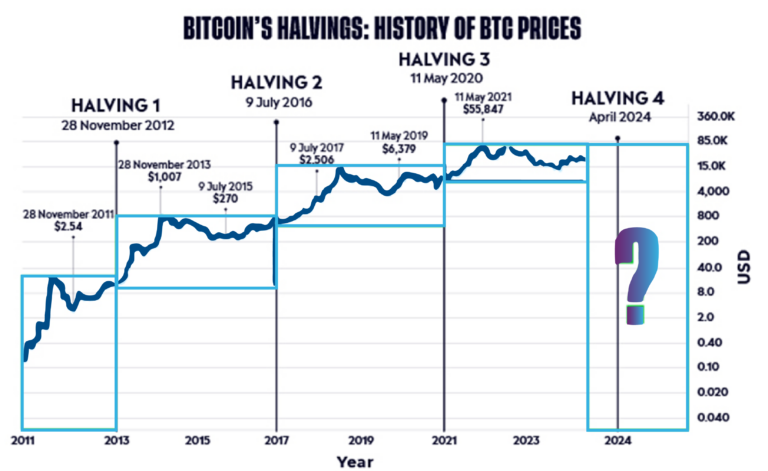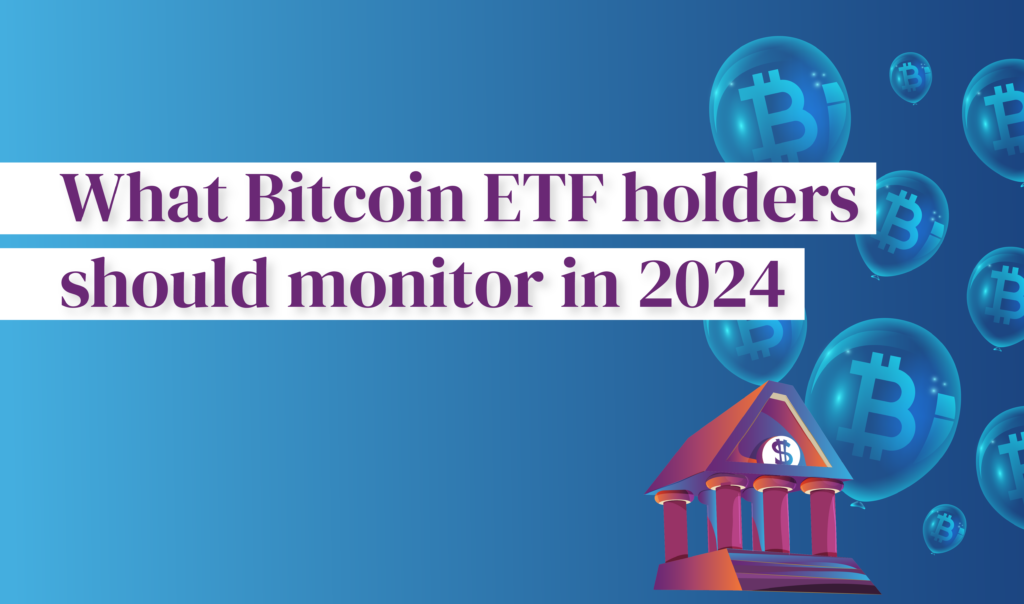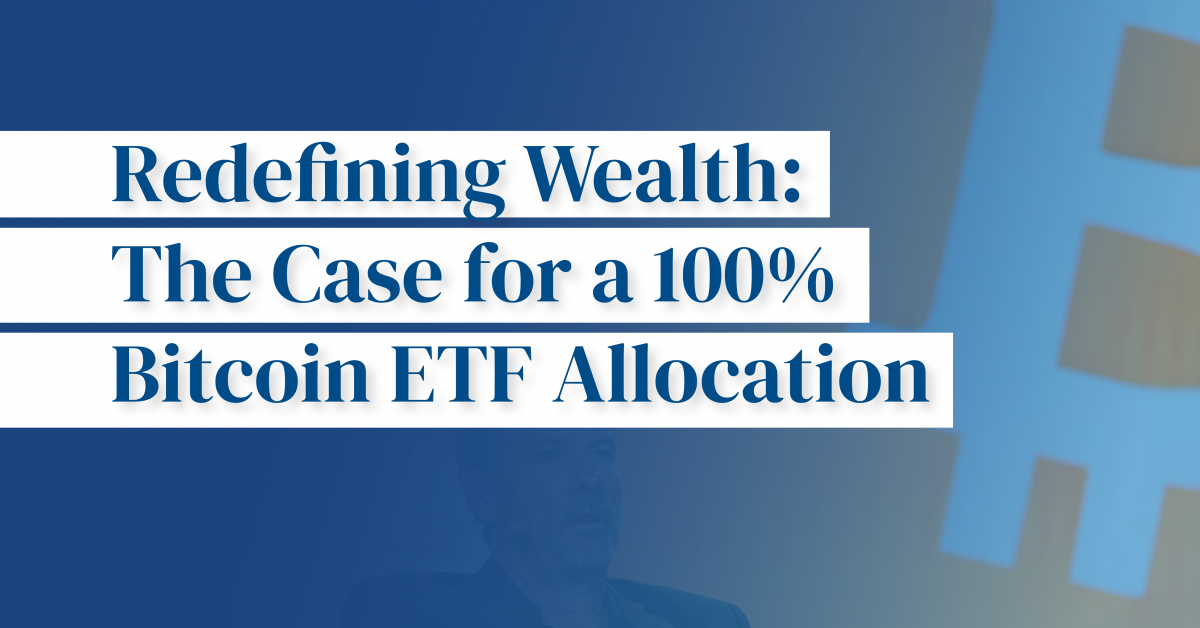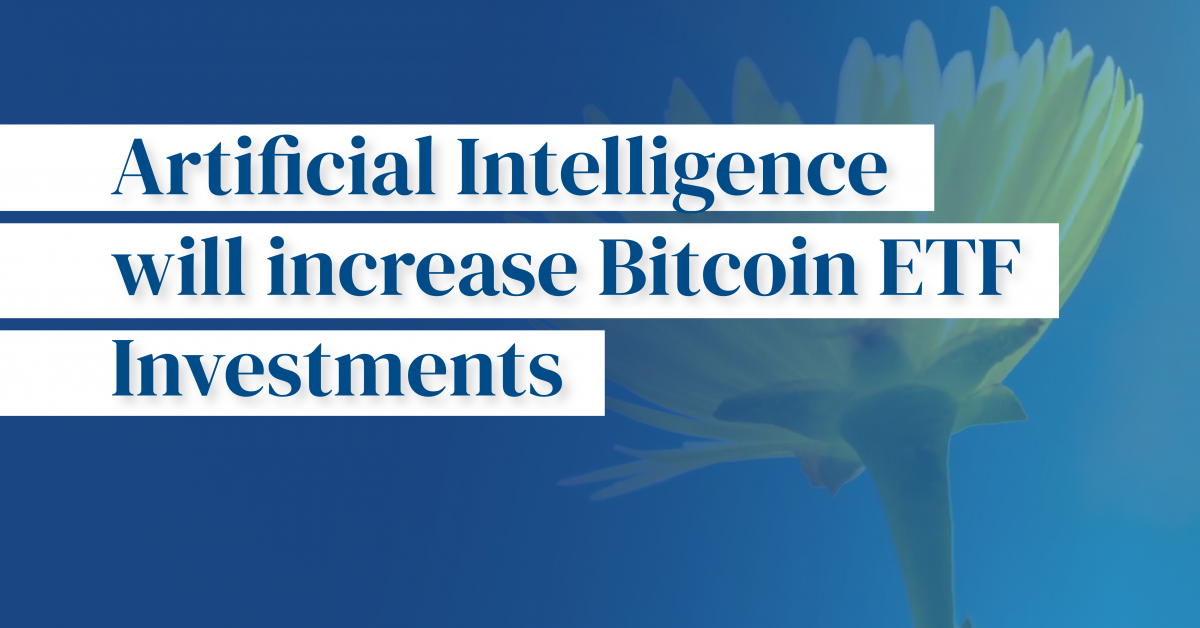As we step into 2024, the landscape of Bitcoin ETFs is undergoing transformative changes, fueled by significant regulatory and market developments. The SEC’s recent approval of nine Spot Bitcoin ETFs marks a watershed moment, setting the stage for a new era in cryptocurrency investing. This blog aims to provide Bitcoin ETFs holders with in-depth insights into the key areas they should monitor in this rapidly evolving landscape.
See How Melanion Capital Can Guide You to Your Financial Wealth
We’ll explain everything you need to know about Bitcoin ETFs: from how they work, why investors are turning to them, and how they compare with other cryptocurrency investments.
1. Impact of SEC's Approval of Spot Bitcoin ETFs:

The increased market stability is likely to attract investors who previously were deterred by the asset’s price fluctuations. By reducing the barriers to entry, these ETFs can provide a more secure and regulated avenue for investment, potentially decreasing the risk premium associated with Bitcoin investments and contributing to a more level playing field with traditional assets.
The SEC’s approval is poised to revolutionize investor engagement with Bitcoin, opening the floodgates to a diverse array of market participants. Retail investors, who may have been on the sidelines due to the complexities and risks of direct cryptocurrency ownership, now have a more straightforward path to entry through conventional investment accounts. Simultaneously, institutional investors such as pension funds, endowments, and family offices, which demand strict regulatory compliance, can now consider Bitcoin as a viable component of their asset allocation strategies.
This expansion is not only a testament to Bitcoin’s growing acceptance but also catalyzes a broader conversation about digital assets’ place in modern portfolios. As traditional investors seek growth in an era of low yields, Bitcoin’s unique characteristics and uncorrelated market behavior offer a compelling proposition for portfolio diversification.
For a deep dive into how this broadening investor base impacts Bitcoin’s valuation and market dynamics, and why maintaining a zero allocation to Bitcoin ETFs might be a strategic oversight, visit our detailed analysis on our blog titled « Why Zero is the Wrong Allocation to Bitcoin ETFs ».
2. The Bitcoin Halving Event:
The much-anticipated Bitcoin Halving event, poised to occur at the end of the first quarter of 2024, represents a pivotal moment for Bitcoin’s economic model. This event will slash the mining reward by 50%, effectively halving the rate at which new Bitcoins are created and released into circulation. Historically, such halvings have catalyzed significant bullish momentum in the Bitcoin market, as the reduced supply often leads to an increase in price, assuming demand remains steady or grows.
This supply shock tends to have profound implications, as observed in the past halving events. Each has been a precursor to a marked price appreciation, catalyzing periods of intense speculation, investment, and media attention towards Bitcoin. It’s a phenomenon that has not only reinforced Bitcoin’s deflationary nature but also solidified its narrative as ‘digital gold‘.
The upcoming fourth halving is widely expected to follow this historical pattern, with many in the Bitcoin community and beyond watching closely for its impact on market dynamics. It’s anticipated that this event will again serve as a trigger for potential price surges, aligning with the principles of scarcity-driven value.

Source : Etoro
The long-term ramifications of Bitcoin halvings extend beyond mere price speculation. They have a transformative effect on the network’s economic incentives structure. As mining rewards from the protocol diminish, miners are expected to increasingly rely on transaction fees as their primary source of revenue.
This economic shift necessitates innovation within the Bitcoin ecosystem, compelling miners and other stakeholders to develop and introduce new layers of services and products on the Bitcoin network. These innovations could range from enhanced transaction processing services to novel financial products that utilize the security and transparency of the Bitcoin blockchain.
One such innovator is SATO Technologies, which has begun to leverage the Bitcoin network in new ways to offset the reduction in mining rewards. SATO Technologies and others like it are on the forefront of this evolutionary process, creating solutions that could redefine the role of miners and their contribution to the Bitcoin ecosystem.
For an in-depth discussion on how the Bitcoin halving influences the broader market and the innovative responses it has spurred within the mining community, tune into our podcast featuring a conversation with the team from SATO Technologies.
3. Institutional Adoption and Its Market Influence:

As we progress through 2024, Bitcoin’s maturation into a legitimate asset class has been cemented by its acceptance amongst institutional investors. This burgeoning trend of institutional investment is not only a testament to Bitcoin’s growing credibility but also a catalyst for enhanced market stability and maturity. Institutional investors bring with them a wealth of experience, deep pockets, and a long-term investment horizon, which can lead to a reduction in market volatility and a more methodical approach to market growth.
These institutions are not just passive spectators; their involvement has ripple effects across the entire ecosystem. Their entry often paves the way for improved market infrastructure, with better custody solutions and more sophisticated trading platforms, which in turn can lead to increased confidence from retail investors. Furthermore, as regulatory frameworks around Bitcoin continue to develop, institutional investors help in legitimizing the asset class, providing a sense of security and acknowledgment that resonates with regulators and policymakers.
Institutional involvement in Bitcoin is evolving rapidly, particularly with the introduction and growth of Bitcoin ETFs. These financial instruments are becoming a cornerstone of institutional investment strategies, offering exposure to Bitcoin without the complexities of direct ownership. As these institutions deepen their engagement with Bitcoin ETFs, we can expect a significant impact on the growth and stabilization of the market.
Bitcoin ETFs serve as a gateway for traditional investment firms to enter the digital asset space, allowing for broader market participation. They not only simplify the investment process but also offer a regulated and familiar structure for institutional investors. This familiarity is crucial, as it lowers the entry barriers for traditional funds that might otherwise be hesitant to engage with digital assets.
See How Melanion Capital Can Guide You to Your Financial Wealth
We’ll explain everything you need to know about Bitcoin ETFs: from how they work, why investors are turning to them, and how they compare with other cryptocurrency investments.
4. Global Economic Factors and Their Influence:
The cryptocurrency market, particularly Bitcoin, has displayed a significant degree of sensitivity to global economic policies enacted by major central banks. The actions of these financial institutions—especially those related to interest rate adjustments and broader monetary policy shifts—can have far-reaching effects that ripple through the Bitcoin market. These policies can affect investor confidence and risk appetites, leading to fluctuations in capital flows into and out of Bitcoin and Bitcoin Equities.
Interest rate hikes and contractions in monetary supply typically strengthen the native currency, which can dampen Bitcoin’s appeal to investors seeking higher yields. Conversely, a dovish stance with lower interest rates can lead to an influx of investments into Bitcoin as investors seek out assets with potentially higher returns.
In times of economic uncertainty, characterized by volatile markets, inflation fears, or geopolitical tensions, Bitcoin’s narrative as ‘digital gold’ comes to the forefront. Much like gold, Bitcoin is praised for its scarcity and decentralized nature, which can make it an attractive safe haven for investors looking to hedge against instability.
5. Technological Advancements in Bitcoin and the Rise of CBDCs:
The Lightning Network
In addition to improving transaction speeds, these advancements are likely to bolster Bitcoin’s market value by broadening its use cases. This could lead to greater acceptance of Bitcoin in retail transactions and microtransactions, which have previously been impractical due to network constraints.
The rise of Central Bank Digital Currencies (CBDCs) marks a transformation in how fiat currencies are conceptualized and used. CBDCs are designed to combine the convenience and security of digital form, like cryptocurrencies, with the regulated, reserved-backed money circulation of traditional banking. Their emergence is poised to disrupt the current financial paradigm by providing users with a digital currency that is directly issued and backed by the state, offering a level of security and trust that decentralized assets like Bitcoin cannot.
The introduction of CBDCs is expected to change the dynamics between state-backed digital currencies and decentralized cryptocurrencies like Bitcoin. CBDCs could potentially offer a bridge for mainstream investors and the public at large to become more comfortable with digital currencies, paving the way for increased adoption of Bitcoin and other cryptocurrencies.
Furthermore, the interaction between CBDCs and Bitcoin may result in new financial products and services, providing investors with more flexible and diverse investment solutions.
The year 2024 is poised to be a defining period for investors in Bitcoin ETFs. The convergence of regulatory breakthroughs, technological advancements, global economic shifts, and the specific dynamics of Bitcoin equities present a complex yet potentially rewarding investment landscape. For both seasoned and new investors, staying informed and adaptable will be crucial in leveraging the opportunities that this dynamic market has to offer.
See How Melanion Capital Can Guide You to Your Financial Wealth
We’ll explain everything you need to know about Bitcoin ETFs: from how they work, why investors are turning to them, and how they compare with other cryptocurrency investments.








